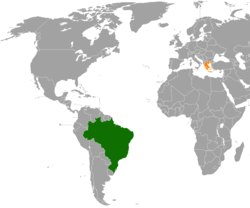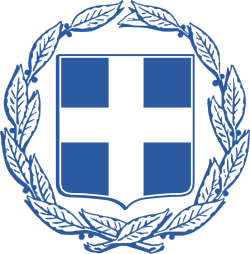Brazil–Greece relations
Greco-Brazilian relations refers to the historical and current bilateral relationship between Brazil and Greece.
 | |
Brazil |
Greece |
|---|---|
History
The countries have enjoyed "Bilateral relations [that] have always been good and are progressing smoothly," according to the Greek Ministry of Foreign Affairs.[1]
In addition to its embassy in Brasilia, Greece has two general consulates (in São Paulo and Rio de Janeiro) and four honorary consulates. Brazil has an embassy in Athens.
High-level contacts

In the past 10 years, there have been a number of high-level contacts between the two nations, including a Brazilian Parliamentary Delegation visit to Greece, a "reciprocal visit" by a Greek Parliamentary Delegation, a meeting between two Ministers of Foreign Affairs, and a visit by the Greek Prime Minister "on the occasion of the EU LAC Summit Meeting in Rio de Janeiro in 1999."[1]
The meeting of the two foreign ministers in April 2009 was the first time a Brazilian foreign minister had visited Greece in an official capacity.[2] Greece's Dora Bakoyannis and Brazil's Celso Amorim discussed opportunities for joint endeavours and further cooperation in the fields of tourism, aircraft building, shipping, agriculture and general trade. Greece has pledged support for Brazil's bid for a permanent place on permanent seat on the United Nations Security Council while Brazil has committed to support Greece in receiving a post at the Human Rights Council in 2013.[2]
Diplomacy
|
|
See also
- Foreign relations of Brazil
- Foreign relations of Greece
- Greeks in Brazil
References
- Greek Ministry of Foreign Affairs about relations with Brazil. Accessed May 4, 2009.
- "Statements of Foreign Minister Bakoyannis and her Brazilian counterpart, Mr. Celso Amorim, following their meeting". diplomacymonitor.com. April 3, 2009. Retrieved May 6, 2009.

